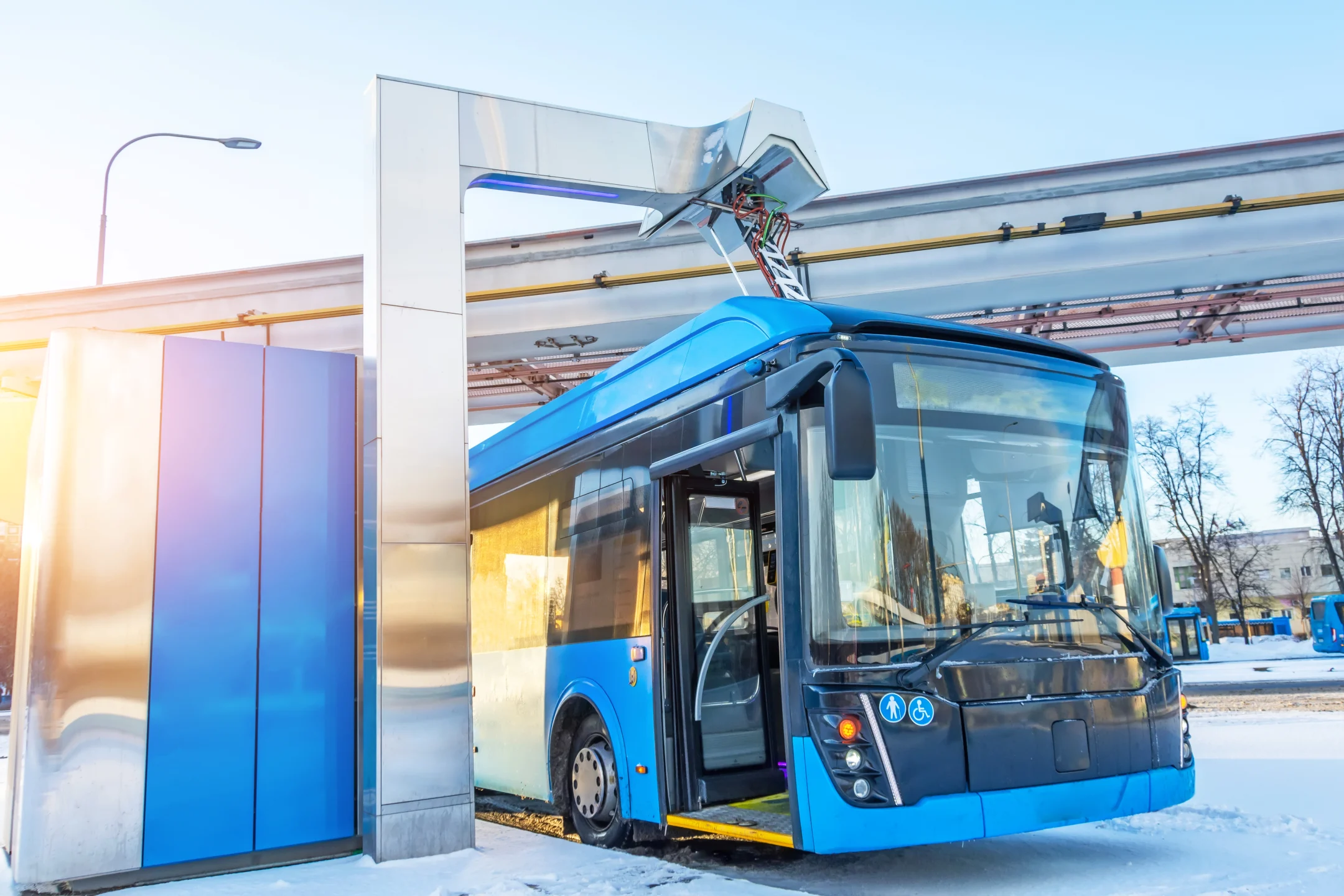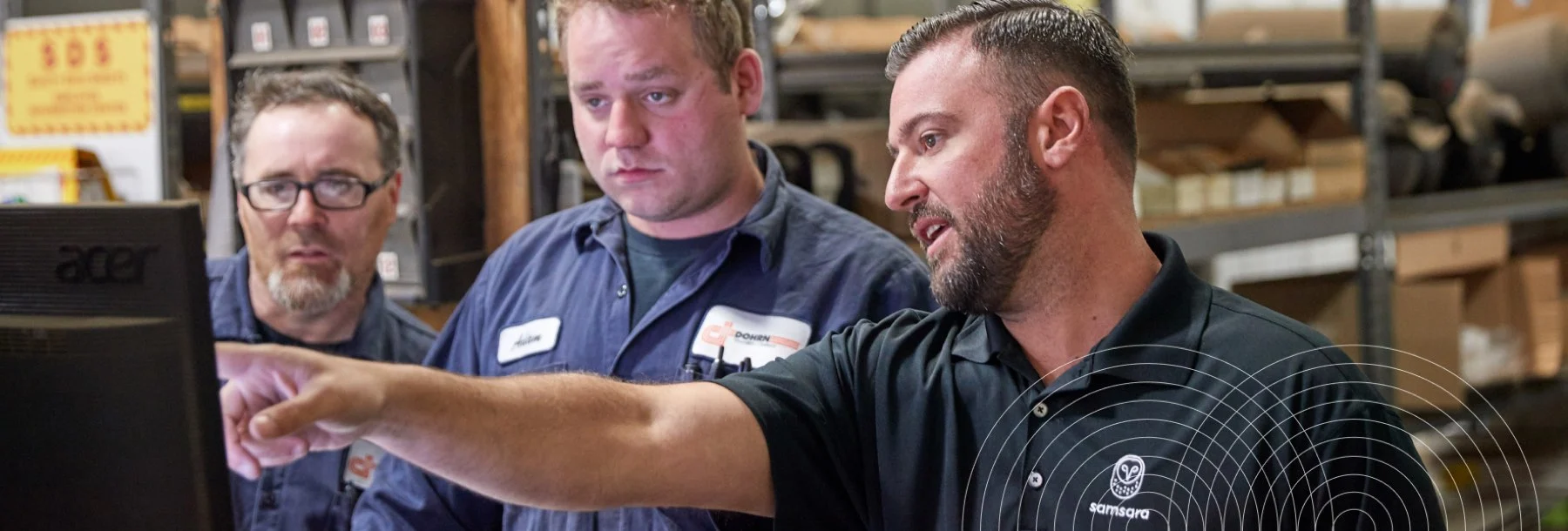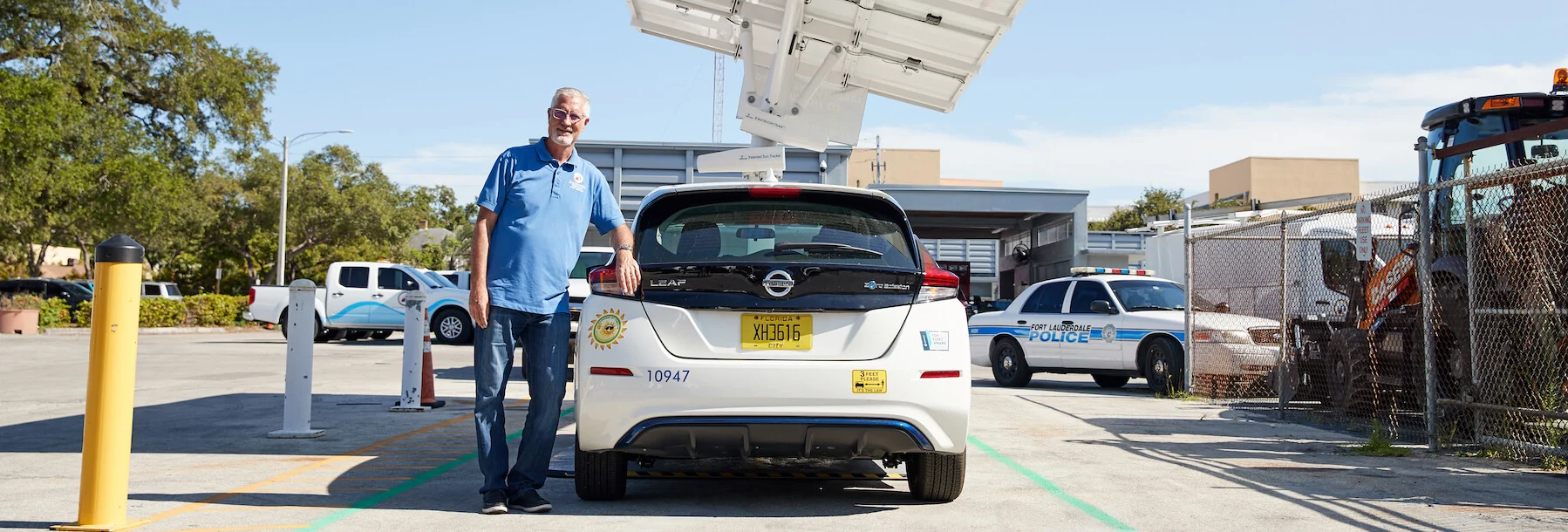Sustainability
How Construction Companies are Leveraging Real-Time Data to Reduce Fuel Waste (Wed, 26 Jul 2023 21:54:01 GMT)
February 24, 2023

GM & VP, Product (Wed, 26 Jul 2023 21:54:01 GMT)

One of the biggest challenges the construction industry is facing today is rising fuel costs. Due to the industry's reliance on heavy equipment such as trucks, cranes, and yellow iron, 98% of all energy use across the industry comes from diesel. With diesel prices increasing by as much as 55% per gallon, the industry's high rate of fuel consumption has become even more costly over the past few years.
Adding to the pressure is increased regulatory and investor scrutiny on CO2 emissions. Concrete production is one of the world’s largest emitters of CO2, accounting for about three times as much CO2 pollution as aviation, a figure that is especially concerning given that the world’s building stock is expected to double by 2060. As a result, stringent government regulations and hefty fines (including those for heavy equipment) are being introduced to minimize the industry's overall carbon footprint.
With fuel costs on the rise and emissions reductions targets looming, construction companies are looking for ways to reduce fuel usage without compromising productivity. But without real-time visibility into fuel consumption, construction companies have no way of tracking or acting upon their fuel expenditure or emissions. That's where real-time IoT (Internet of Things) data comes in—and it is playing a bigger role than ever before, pushing the construction industry into the modern digital age.
Through the adoption of IoT sensors that provide real-time insights on fuel use, construction companies are taking control of their data to save costs, reduce emissions, and improve operational efficiency. In fact, according to a recent analysis of some of Samsara's construction customers, organizations saw a 28% reduction in idling within their first year using the platform.*
The best way to illustrate this is through the lens of one of our customers: Summit Materials. By leveraging real-time sensor data, Summit Materials is able to stay resilient in the face of today’s challenges and position themselves to meet their ambitious sustainability goals in the future.
How Summit Materials is saving $1.8M annually on fuel costs
Summit Materials is a leading provider of integrated construction materials, with more than 400 sites across 23 U.S. states and British Columbia, Canada. With such a massive operation, fuel represents one of their largest costs.
“We consume about 35 million gallons of diesel annually,” said Karli Anderson, Executive Vice President, Chief People and ESG Officer, and Head of Communications at Summit Materials. “With the increase in fuel costs, we have every incentive as a business to reduce our fuel use because of the benefits in terms of both cost and emissions reduction.”
Idling, which occurs when a vehicle’s engine is left running when it’s not in motion, is one of the biggest contributors of fuel waste. Researchers estimate that idling from heavy-duty and light-duty vehicles in the U.S. alone wastes about 6 billion gallons of fuel annually, contributing to millions of tons of CO2 emissions and costing as much as $11 billion annually.
Like many companies, Summit Materials identified idling as one area they could optimize to reduce fuel use. But before adopting IoT-powered Connected Operations technology, they could only track fuel usage based on fuel purchased, rather than actual fuel used. By leveraging IoT technology, Summit Materials is able to get real-time visibility into idling trends across their fleet as well as granular data on idling. As part of their data-driven Fuel Efficiency Program, Summit Materials is now able to coach drivers and reduce fuel use in a more effective way.
“In the summertime when it's hot, sometimes our employees will use their truck as their office. How much time are they spending driving versus idling? We use data to understand all of this,” said Anderson.
By connecting this real-time data with their existing systems, Summit Materials has unlocked a new, proactive approach to managing fuel consumption.
“We've worked with Samsara to develop an API that works directly with our Microsoft business intelligence platform. That allows us to monitor fuel usage, idle time, and emissions in real time. This allows us to give regular report-outs to our regional folks, so they have a sense of how well they are doing,” said Anderson.
As a result, Summit is saving approximately $1.8 million per year on fuel costs—a significant bottom-line benefit that reflects the savings that many companies across the construction industry are realizing through Connected Operations technology.
Achieving ambitious ESG goals with real-time data
It’s not just about cost savings—real-time data is also helping construction companies keep up with increasing stakeholder expectations around sustainability, particularly for environmental, social, and governance (ESG) reporting.
In response to the massive volume of emissions generated by the construction industry, new standards for off-highway equipment are mandating lower emissions levels or replacing legacy equipment altogether—and failure to follow these standards has led to companies having to pay as much as $819,000 in fines.
In addition, construction companies looking to lower their net emissions can also leverage carbon offsets (also known as carbon credits), which are tradable certificates associated with activities that lower carbon emissions. By participating in the offset market, construction companies can shrink their net carbon footprint by funding projects that reduce emissions elsewhere.
Construction companies are now using real-time data to meet these new requirements and demonstrate their commitment to sustainability. For example, data from real-time IoT sensors is central to Summit Materials’ ESG initiative.
“From an investor perspective, what they want to see is consistent, incremental progress to use less resources, reduce costs, and reduce emissions over time,” said Anderson. “To be able to show, through data, how you're notching progress gives you a whole other level of credibility with the investment community and gives them significant confidence that you're not just throwing a number out there, but in fact, you are actually showing evidence of how you are reducing your impacts.”
Summit Materials’ Fuel Efficiency Program is just the beginning of their ambitious ESG goal of achieving net-zero emissions by 2050. By leveraging IoT data, as well as by taking advantage of the offset market, Summit Materials is on track to report on progress against their ESG goals.
“By attacking the carbon footprint of our vehicles, equipment, and material production, as well as with a little help from the credit and offset market, we’re able to show a clear path to a 75% reduction in emissions going through the entire value chain of the business,” said Anderson.
Real-time data is transforming the construction industry—and it's only just begun
A recent Samsara analysis showed that, using real-time data on fuel consumption, the average construction company sees a 28% reduction in fuel waste from idling within a year of adopting Samsara.* Some companies may see even greater results after implementing a proactive idling coaching program. Looking ahead, Connected Operations technology has the potential to be game-changing for the construction industry.
For example, construction companies are increasingly looking to electric vehicles (EVs) to power their operations, helping reduce costs and lower emissions. Research suggests that by 2030, owning an EV will be significantly cheaper than owning a gasoline or diesel vehicle (including for heavy-duty vehicles); alternative energy also means zero tailpipe emissions.
Electrification is a complex process that requires organizations to rightsize their fleet based on data such as vehicle type and class, lifetime usage, daily maximum range, and average fuel economy. Real-time data is critical to these decisions. Summit Materials, for example, is already using data on their existing assets to inform their electrification journey and make smarter decisions about the future of their fleet.
“How can we be ready for our electric future? We make decisions every year about what equipment we’re going to replace,” said Anderson. “Having access to data and telematics has helped us assess the performance of our equipment, as we prepare to build out our electric infrastructure.”
As the industry continues to innovate—and new inventions emerge, such as concrete that traps CO2 from the air—construction companies will need to remain agile. By taking advantage of IoT technology and the real-time data it provides, companies like Summit Material are well-positioned to succeed in the future.
“By leveraging our telematics partners, we’re able to anticipate needs for maintenance and performance issues,” said Anderson. “It also helps us understand how to run our business even more efficiently as we go into the next five years, the next decade.”
If you’re interested in learning more, check out this customer spotlight film about how Summit Materials lowered fuel costs and reduced emissions.
*Based on analysis of anonymized data across 329 customers, comparing average idling per customer during month 1 vs. month 12 post-implementation. For more information about your rights and how we may process your personal data, please see our privacy policy.


















